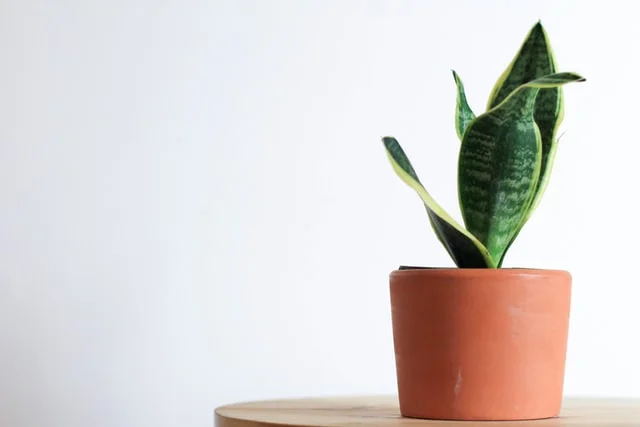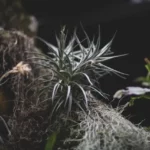Table of Contents
Snake Plant Propagation – 4 Ways To Propagate Your Snake Plant
Snake plants are also called mother-in-law or sansevieria, and they are popular houseplants. If you want to increase their population, then don’t buy other snake plants. Instead, they’re easy to propagate and you can do so in four ways. Thus, you will multiply them to expand their life or for friends.
Besides, snake plants are beautiful, and you need more in your home. Propagating the plant is an easier task, and our guide below will take you through the entire process.
Methods of Snake Plant Propagation
Soil propagation
Propagating the snake plant by soil is the most popular method, and it requires a cactus potting mix as medium. But, first you need to select thick and healthy leaves. They should be perfect with no signs of damage, and though damaged ones may root, it’s best to use healthier leaves.
Cut the leaves carefully using a flat edge. Next, make dots on the segments and closer to the bottom of the leaf. Wait for these segments for 3-4 days to dry before you plant them.
This will help lower the chances of rotting. Now, put the segments into the water and rooting hormone to enhance the rooting of the plant.
Next, place the cuttings in an area with indirect and bright lights. Water it when the soil is dry and ensure there is no excess water to prevent the likelihood of rotting.
Advantages of Soil Propagation
- It’s a one-step method
- You can mix different varieties in your pot
- You don’t need to repot the plant
Disadvantages
The new cuttings may not have similar characteristics to their parents
Water propagation
To propagate in water, you will need to cut healthy snake plant leaves and put them on water. Cut the plant near the base and make a “V” notch upside down on its bottom and place it in water.
Ensure the water is higher above the “V” cut since the plant will be growing from the tissue you just cut. Therefore, it will give the roots enough room to develop.
Propagating by water will take you 3 – 5 weeks for the roots to grow. Additionally, in an extra 2-3 weeks, the pups will emerge. Once the pups grow, you can choose to let the plant continue growing in water or replant them in the soil.
Advantages of Water Propagation
- It is easy
- You can let the plants grow in water after they develop
Disadvantages of Water Propagation
- Some snake plant varieties lose their color margins when you do water propagation
- The cuttings can start to rot
Propagation from rhizomes
Snake plants have underground stems called rhizomes which store water. With the right conditions, these rhizomes can grow into snake plants. You cut off the rhizomes from the base of the plant while being careful to avoid damaging the surrounding roots.
Leave the rhizomes to enable it callous in some 3-4 days and once it does, then plant it in your pot.
Advantages of Propagation by Rhizomes
- The new plant retains the parent’s characteristics
- It is cheaper and quicker
Disadvantages
The new plant can take the bad characteristics of the parent plant
Propagation by division
The division is a plant propagation method common in gardening and horticulture where a parent plant’ roots are broken into two or more parts. The divided pieces are then planted in other soil or water and will grow as an individual plant.
Use sharp scissors to divide the root clamp and ensure each divided part has roots and pups. Now, plant these divided parts into your garden and watch as your snake plant multiplies in your garden.
Advantages of Propagation by Division
- The resulting plant is similar to the parent plant
- It’s one of the easiest ways of propagating
- It enables you to get multiple plants at the same time
Disadvantages
You can only divide a bigger plant
Problems when propagating the snake plants
Before you proceed with the propagation, you need to choose the type of propagation you can use. Some cuttings may fail to grow, while others may rot. But provided you water them regularly with fresh water, then they will root.
Also, the leaves of the snake plants may get brown and mushy at times from the bottom. They will then turn to a black color and start to rots; this is a nightmare among many gardeners.
If this occurs, you might have put the plant while it’s still heavily succulent and it’s therefore important to dry it before planting it.
Rotting after planning the cuttings means that there is excess water caused by overwatering. The pot could also be too large, or it could have no drainage holes.
Conditions Ideal for Propagation
Since the chances of survival for the snake plant are not 100%, you will need to ensure optimum conditions to ensure most cuttings grow.
Besides, even experienced growers usually lose some cuttings. To ensure the highest chances of propagation, ensure you have the optimum conditions below:
- The Right Pot
The significance of the pot in propagation can never be underestimated. You should go for the Terracotta pots since they are porous and allow better drainage. Since snake plants easily rot, you will need the best pot and one with holes on the bottom for maximum drainage.
- Bright, Indirect Light
Though established snake plants can be nurtured in indifference conditions, they will need a good amount of sunlight to grow well.
Therefore, ensure your cuttings are kept in a room with bright and indirect sunlight. This helps them root faster since lower light can lead to delayed rooting.
- Clean Potting
After cutting the snake plants for propagation, you leave a susceptible wound to bacteria and fungi. Therefore, if you use a dirty pot, it could become a leeway for micro-organisms that can kill the plant.
Therefore, keep the pot cleaner before propagation to ensure the bacteria doesn’t damage the cuttings. Alternatively, you can sterilize the shears and knife used when cutting to kill the harmful microorganisms.
- Ideal Soil Medium
If you overwatered snake plant, you will easily kill them due to rotting and mushiness in their roots and flowers. Therefore, you need a soil medium with good drainage and one which dries easily after each period of watering.
One of your options is buying succulent soil or make ones at home composed of vermiculite, coarse sand, perlite and sphagnum peat moss.
Bottom-line
Snake plants are one of the favorite house plants that are almost waxy and have smooth shaped leaves. Since it has an easy nature, it’s ideal for interiors, and they are visually appealing, making them ideal for indoor spaces.
You can propagate them to use in other rooms or to share them with your friends. And propagation is even an easier task.



